|
|
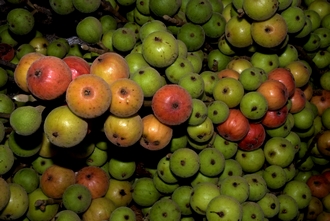 |
_330.jpg) |
|
_330.jpg) |

Apocrypta guineensis
ovipositing through fig wall (Pretoria). |
|
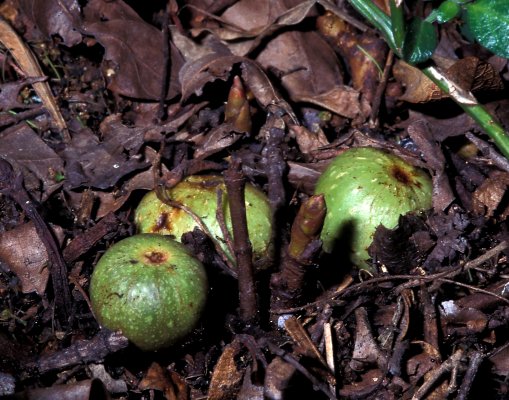
Geocarpic figs (Ithala, Kwazulu-Natal).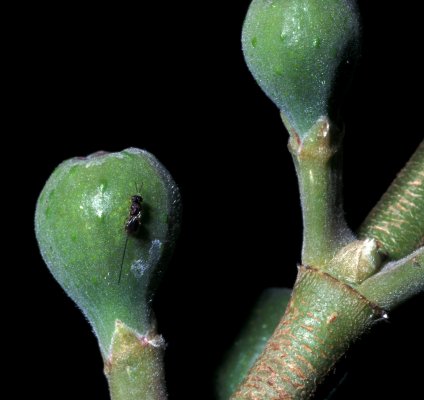
B-phase figs (Pretoria). |
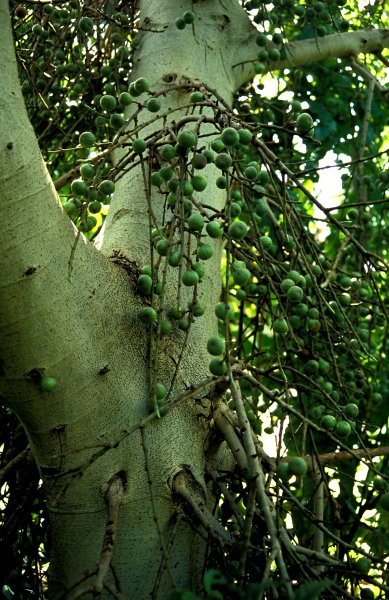
C-phase figs
(Cape Town). |
|
South Africa.
Photographs © Simon van Noort (Iziko
Museums of South Africa).
|
|
 |
 |
|
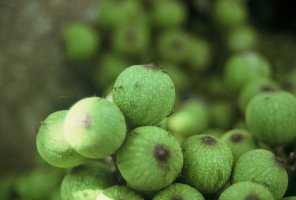 |
 |
|
 |
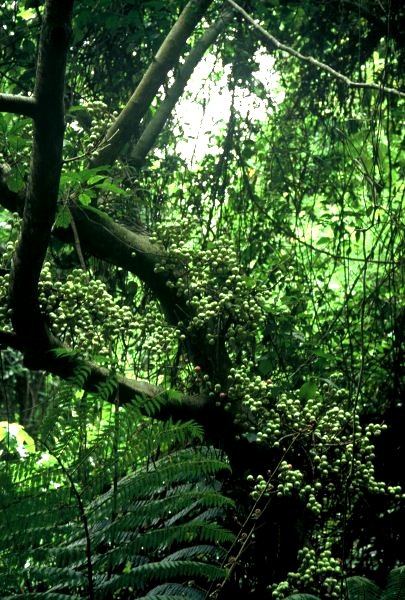 |
|
Ivory Coast.
Photographs
© Jean-Yves Rasplus (INRA).
|
|
 |
 |
|
Angola, Mt. Tchivira.
Photographs © Nigel
Barker (Rhodes University).
|
|
 |
 |
|
 |
 |
|
Angola,
Tchivingura gorge. Photographs © Nigel
Barker (Rhodes University).
|
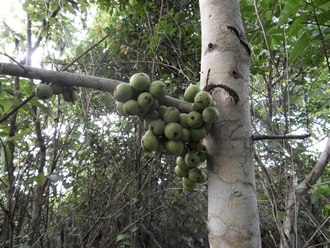 |
|
|
Umalila, Southern Highlands, Tanzania.
Photograph © Paul Latham (UK).
|
Distribution
|

From South Africa
to Senegal and the Arabian Peninsula.
|
Biology
|
Pollinator:
Ceratosolen
capensis (E & S Africa);
Ceratsolen flabellatus and
Ceratosolen silvestrianus (W
Africa).
|
Habitat
|
In woodland and
moist forests.
|
Frugivores
|
Birds, bats and monkeys feed on the ripe figs
facilitating seed dispersal. |
|
 |
Figs of Ficus sur along with
various other fig species comprise the staple diet of Chimpanzee
in Kibale National Park (Uganda). |
Insects
|
The larval
stages of a variety of insects feed on the leaves or figs of Ficus
sur including caterpillars of butterflies
and moths, some of which have developed remarkable strategies to
overcome the sticky latex contained in the leaves. Other insect larvae
bore into the branches feeding on the wood or suck sap from leaves or
figs. |
|
 |
Asota speciosa
(latex
sabotage by the Speciose Tiger moth caterpillar) |
|
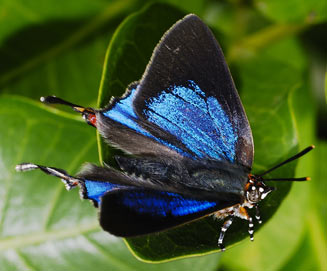 |
Myrina dermaptera
(Lesser fig-tree blue, Scarce fig-tree blue) |
|
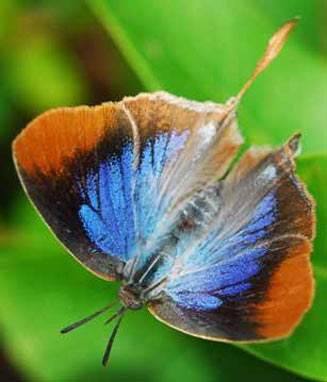 |
Myrina
silenus (Common
fig-tree blue) |
|
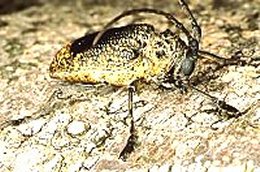
|
Beetle larvae of the
Fig tree borer beetle Phyrneta
spinator (Coleoptera) bore into the branches and trunks often
targeting water stressed, damaged or older trees
|
|
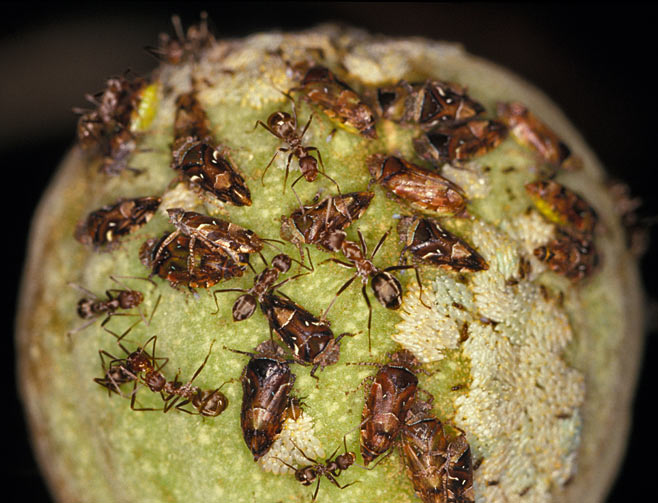 |
Leaf Hopper bugs
Hilda patruelis (Hemiptera)
suck the sap from figs and are tended for honeydew by pugnaceous ants Anoplolepis
custodiens or Pheidole megacephala. By patrolling
figs with bugs the ants reduce the impact of parasitoid fig wasps (which
oviposit through the fig wall) on
pollinator larvae and hence increase the reproductive fitness of the
tree. |
|
Biological
form
|
Tree
up to 30 m tall, terrestrial
|
|
Leaves
|
shape
& colour
|
elliptic
to ovate, chartaceous to coriaceous, apex acuminate to acute, base
subacute to (sub)cordate, both surfaces glabrous to puberulous
|
|
|
size
|
4-20
x 3-13 cm
|
|
|
lateral
veins
|
5-9
pairs, basal pair branched reaching margin below the middle of the lamina
|
|
|
petiole
|
1.5-9
cm long, puberulous
|
|
Stipules
|
1-3.5
cm long, pubescent, caducous
|
|
Figs
|
position
|
on
up to 1.5 m (mostly 50 cm) long branchlets on the main branches and trunk
|
|
|
shape
|
globose,
Ø
2-4 cm (fresh), glabrous rarely (sub)puberulous
|
|
|
peduncle
|
0.5-2
cm long
|
|
|
basal
bracts
|
2-3
mm long
|
|
References
|
Berg, C.C. 1986. The Ficus species (Moraceae) of Madagascar and the
Comore Islands. Bulletin du Muséum national d’Histoire naturelle d’Histoire
Naturelle. Paris (4), 8: 17-55.
Berg,
C.C. 1988. New taxa and combinations in Ficus (Moraceae) in
Africa. Kew Bulletin 43: 77- 97.
Berg,
C.C. 1989. Moraceae. In: R.M. Polhill (ed.) Flora of Tropical East Africa.
A.A. Balkema, Rotterdam.
Berg,
C.C. 1990. Distribution of African taxa of Ficus (Moraccae).
[Proc. 12th AETFAT]. Mitt. inst. Allg. Bot. Hamburg 23: 401-405.
Berg, C.C. 1990. Annotated check-list of the Ficus species
of the African floristic region, with special reference and a key to the
taxa of southern Africa. Kirkia, 13: 253-291.
Berg,
C.C. 1991. Moraceae. In: E. Launert & G.Y. Pope (eds) Flora
Zambesiaca 9, 6. Natural History Museum, London.
Berg, C.C. & Hijman, M.E.E. 1989. Chapter 11. Ficus. Flora of
Tropical East Africa (ed. R.M. Polhill). 43-86. A.A. Balkema,
Rotterdam.
Berg,
C.C., Hijman, M.E.E. & Weerdenburg, J.C.A. 1984. Moracées (incl.
Cécropiacées). Flore du Gabon 26: 1–276.
Berg,
C.C., Hijman, M.E.E. & Weerdenburg, J.C.A. 1985. Moracées (incl.
Cécropiacées). Flore du Cameroun 28: 1–298.
Berg, C.C. & Wiebes, J.T. 1992. African fig trees and
fig wasps. Koninklijke Nederlandse Akademie van Wetenschappen.
Amsterdam, 1-298 pp.
Burrows, J. & Burrows,
S. 2003. Figs of southern & south-central Africa. Umdaus Press,
Hatfield. 379 pp.
|
Links
|
PlantZAfrica (SANBI web site).
|
Credits
|
Photographs
and distribution map
©
Simon van Noort (Iziko Museums of South Africa) or
© Jean-Yves Rasplus (INRA) or Nigel Barker (Rhodes University) or ©
Paul Latham (UK).. Insect images
©
Hamish Robertson (Iziko Museums of South Africa). Butterfly images ©
Steve Woodhall. |
 |
Ficus
sycomorus sycomorus Linnaeus
|
|